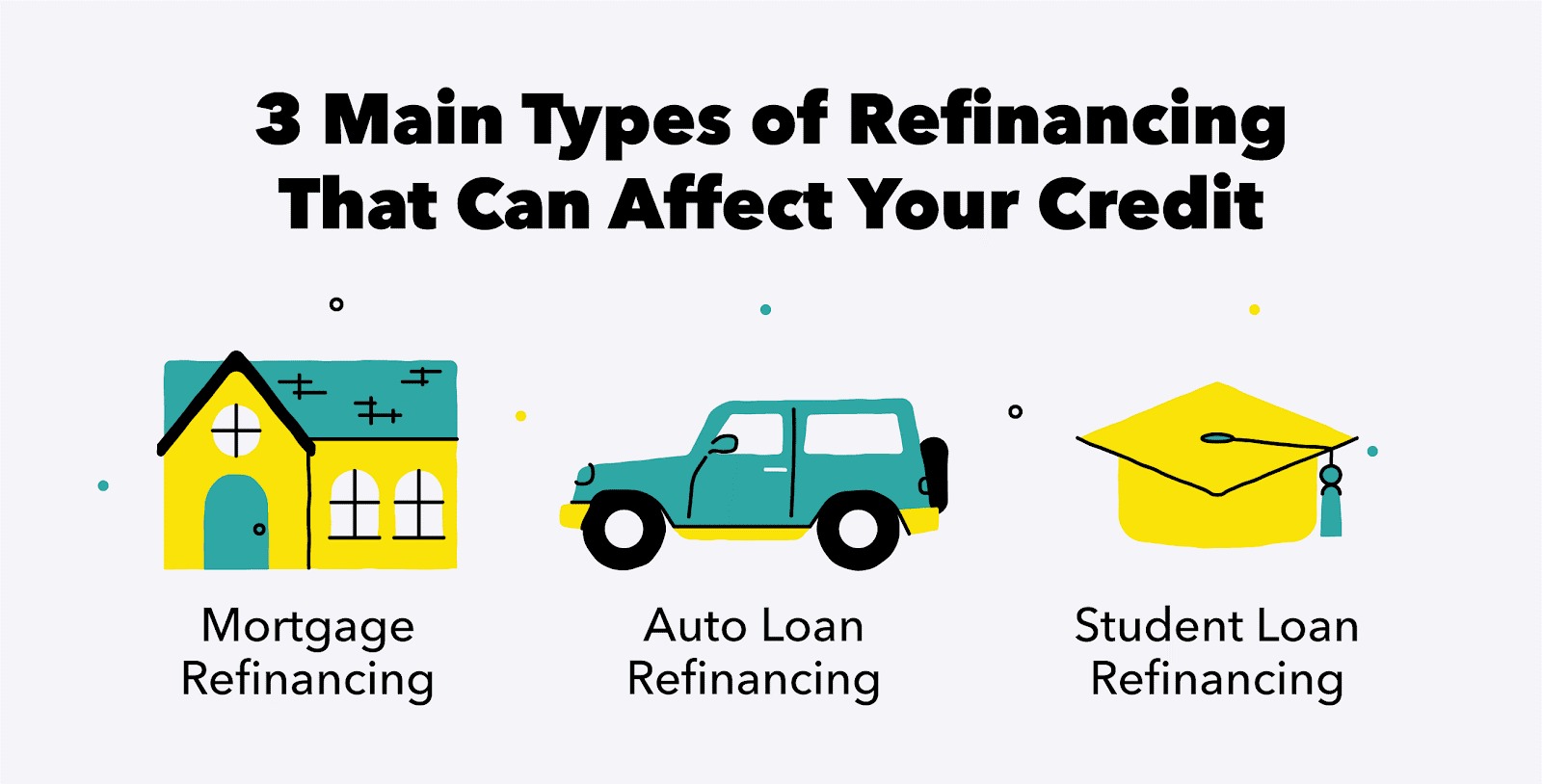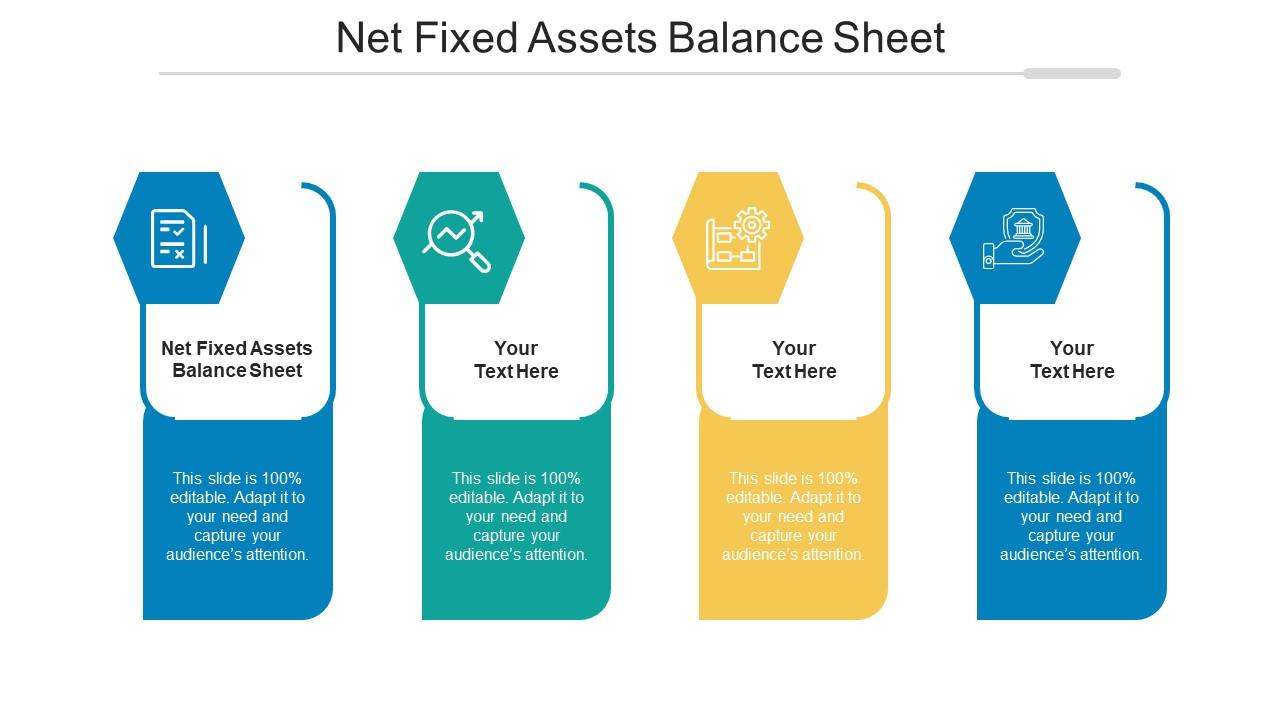

Finance
How To Refinance A Credit Card
Published: October 24, 2023
Learn how to refinance your credit card and save money on interest rates with our helpful finance guide. Take control of your finances and explore the benefits of credit card refinancing.
(Many of the links in this article redirect to a specific reviewed product. Your purchase of these products through affiliate links helps to generate commission for LiveWell, at no extra cost. Learn more)
Table of Contents
- Introduction
- Understanding Credit Card Refinancing
- Assessing Your Current Credit Card Situation
- Shopping for a New Credit Card
- Comparing Interest Rates and Terms
- Applying for a New Credit Card
- Transferring Balances to the New Card
- Closing Your Old Credit Card Accounts
- Managing Your New Credit Card Responsibly
- Monitoring Your Progress and Adjusting Your Strategy
- Conclusion
Introduction
Are you feeling overwhelmed by high interest rates and crippling credit card debt? If so, it may be time to consider credit card refinancing. Refinancing your credit card can be a financial lifesaver, as it allows you to consolidate your existing debt onto a new card with better terms and lower interest rates. This can help you save money and pay off your debt more efficiently.
Understanding credit card refinancing is crucial in order to make informed decisions about your financial situation. In this article, we will guide you through the refinancing process, providing you with the knowledge and tools necessary to take control of your finances. You will learn how to assess your current credit card situation, shop for a new card, compare interest rates and terms, apply for a new card, transfer balances, close old accounts, and manage your new card responsibly.
By following these steps, you can potentially reduce your interest rates, save money, and improve your credit score. However, it is important to note that credit card refinancing is not a one-size-fits-all solution. It requires careful consideration and responsible financial management. Before proceeding, take the time to evaluate your personal financial goals and assess whether credit card refinancing is the right option for you.
Now, let’s delve into the process of credit card refinancing and empower you to make informed decisions about your financial future. Remember, knowledge is power and taking control of your debts is the first step towards achieving financial freedom.
Understanding Credit Card Refinancing
Credit card refinancing involves transferring your existing credit card debt to a new card with better terms and lower interest rates. Essentially, you are taking out a new credit card to pay off your existing balances. This can provide several benefits, including reducing your monthly payments, saving money on interest charges, and simplifying your debt management.
When you refinance your credit card, you have the opportunity to consolidate multiple debts onto a single card. This can make it easier to keep track of your payments and simplify your financial life. Additionally, refinancing allows you to potentially secure a lower interest rate, which can save you money over time.
It’s important to note that credit card refinancing is not the same as debt consolidation loans or balance transfers. While debt consolidation loans involve taking out a new loan to pay off your debts, credit card refinancing focuses specifically on transferring credit card balances to a new card. Balance transfers, on the other hand, involve moving high-interest debt from one card to another, usually with an introductory low or 0% APR period.
One of the key advantages of credit card refinancing is the potential to save money on interest charges. High-interest credit card debt can be a significant burden, making it challenging to pay down your balances. By refinancing to a card with a lower interest rate, you can reduce the amount of interest you pay each month and accelerate debt repayment.
Additionally, credit card refinancing can help improve your credit score. Consistently making on-time payments and reducing your overall credit utilization can positively impact your creditworthiness. However, it’s important to be mindful of any fees associated with credit card refinancing, such as balance transfer fees or annual fees, as these can impact the overall cost savings.
Overall, understanding credit card refinancing is crucial in order to make informed decisions about your financial situation. By consolidating your debts, securing a lower interest rate, and responsibly managing your new credit card, you can take control of your finances and work towards a debt-free future.
Assessing Your Current Credit Card Situation
Before diving into the credit card refinancing process, it is important to assess your current credit card situation. This involves taking a close look at your existing credit cards, outstanding balances, interest rates, and payment history. Understanding where you stand financially will help you determine if credit card refinancing is the right choice for you.
Start by reviewing all of your credit card statements to get a clear picture of your outstanding balances. Take note of the interest rates associated with each card, as well as any fees you may be incurring. This will give you a sense of the total amount you owe and how much you are paying in interest each month.
Next, evaluate your payment history. Have you been consistently paying your credit card bills on time? Late payments can have a negative impact on your credit score and may affect your eligibility for credit card refinancing. If you have a history of missed or late payments, it is crucial to get back on track and establish a solid payment record before considering refinancing.
Another factor to consider is your credit utilization ratio. This is the percentage of your available credit that you are using. Lenders typically prefer to see a utilization ratio of 30% or lower. If your current credit cards are maxed out or if you are using a significant portion of your available credit, this may affect your chances of being approved for credit card refinancing.
In addition to assessing your financial standing, take some time to reflect on your financial goals and budgeting habits. Consider if you have the discipline to manage a new credit card responsibly. It’s essential to avoid falling back into bad spending habits that may have led to high credit card debt in the first place.
By thoroughly assessing your current credit card situation, you can determine if credit card refinancing is the right step for you. If you have a good payment history, manageable debt levels, and a clear understanding of your financial goals, refinancing can be a valuable tool to help you take control of your finances and achieve your long-term goals.
Shopping for a New Credit Card
Once you have assessed your current credit card situation and made the decision to refinance, it’s time to start shopping for a new credit card. This step is crucial as it will determine the terms and conditions of your new card, including interest rates, fees, rewards, and credit limits. Here are some important factors to consider when shopping for a new credit card:
1. Interest Rates: Look for a credit card with a low Annual Percentage Rate (APR). This will help minimize the amount of interest you pay on your outstanding balances. It’s important to note that some cards may offer introductory low APRs, so make sure to understand when the introductory period ends and what the regular APR will be.
2. Fees: Pay close attention to the fees associated with the new card. This may include annual fees, balance transfer fees, late payment fees, or foreign transaction fees. Consider these fees in relation to the potential savings you may achieve through refinancing.
3. Rewards and Benefits: If you are interested in earning rewards such as cash back, airline miles, or points, choose a card that offers a rewards program that aligns with your spending habits and preferences. Additionally, consider any other benefits offered by the card, such as travel insurance, purchase protection, or extended warranties.
4. Credit Score Requirements: Some credit cards may have specific credit score requirements for approval. Check the eligibility criteria to ensure that you meet the minimum requirements before applying. This can help avoid unnecessary credit inquiries that may negatively impact your credit score.
5. Credit Limit: Evaluate the credit limit offered by the new credit card. This should be sufficient to accommodate your outstanding balances and any future spending needs. Keep in mind that a higher credit limit may be advantageous, as it can help improve your credit utilization ratio.
6. Customer Service and Reputation: Research the card issuer’s reputation for customer service. Look for reviews and feedback from existing cardholders to understand their experience with the company. A responsive and trustworthy issuer can make managing your new credit card much easier and more pleasant.
Take the time to compare different credit card offers and weigh their respective benefits and drawbacks. Consider using online comparison tools or seeking guidance from credit card experts to help you make an informed decision. Remember that the goal is to find a credit card that aligns with your financial goals and offers favorable terms for your credit card refinancing needs.
Comparing Interest Rates and Terms
When refinancing your credit card, one of the most important factors to consider is the interest rate and terms offered by different credit cards. Comparing these rates and terms will help you choose the card that offers the most favorable conditions for your financial situation. Here’s what you need to know:
1. Interest Rates: The interest rate, also known as the Annual Percentage Rate (APR), is the cost of borrowing money on the credit card. Look for a card with a lower APR, as this will result in less interest charged on your outstanding balance. Remember to consider whether the APR is an introductory rate or a regular rate after a specific period of time.
2. Introductory Interest Rates: Some credit cards offer an introductory period with a low or 0% APR for balance transfers. This can be advantageous if you have a high-interest balance to transfer from your existing card. However, make sure to check the duration of the introductory period and the interest rate that will apply after the promotional period ends.
3. Balance Transfer Fees: If you are planning to transfer balances from your existing cards to the new card, consider the balance transfer fee. Some cards may charge a percentage of the amount being transferred, so factor in this fee when comparing offers. Look for cards with lower or no balance transfer fees, as this will reduce your overall cost of refinancing.
4. Annual Fees: Some credit cards may have an annual fee, which is a fee charged by the issuer for the card’s membership. Take this fee into account when comparing cards. If the card offers significant benefits or rewards, the annual fee may be worthwhile. However, if you don’t foresee using those benefits, look for cards with no annual fees.
5. Penalty APR: Understand the penalty APR, which is the higher interest rate that may be charged if you miss a payment or fail to comply with the card’s terms and conditions. While you should always strive to make timely payments, it’s essential to be aware of the potential consequences if you are unable to do so.
6. Other Terms and Conditions: Review the card’s terms and conditions for any other factors that are important to you. This may include cash advance APR, foreign transaction fees, credit limit, and any additional perks or benefits offered by the card.
Comparing interest rates and terms will allow you to select a credit card that aligns with your financial goals and offers the most favorable conditions for your credit card refinancing needs. Remember to consider the long-term implications, such as the regular APR after any promotional periods, as well as any associated fees, to make an informed decision.
Applying for a New Credit Card
Once you have identified a credit card that meets your needs and offers favorable terms, it’s time to apply for the new card. The application process for a new credit card is relatively straightforward, but there are a few key steps to keep in mind:
1. Gather Your Information: Before you begin the application, gather all the necessary information you will need to provide. This may include your personal details, contact information, employment information, and financial details such as income and expenses. Having this information on hand will make the application process smoother and quicker.
2. Review the Application: Carefully read through the credit card application to ensure that you understand all the terms and conditions, including fees, interest rates, and any promotional offers. If there is anything you are unsure about, seek clarification from the card issuer or customer service representative.
3. Complete the Application: Fill out the application accurately and honestly. Provide all the required information, and double-check for any errors or omissions before submitting. Inaccurate or incomplete information can lead to delays in the application process or even application rejection.
4. Consent to a Credit Check: As part of the application process, the credit card issuer will typically perform a credit check to assess your creditworthiness. By submitting the application, you are giving consent for the issuer to access your credit report and evaluate your credit history. This check helps the issuer determine if you meet their credit standards and qualify for the card.
5. Wait for a Decision: After submitting your application, patiently await a decision from the card issuer. This process usually takes a few days to a few weeks, depending on the issuer’s internal processes. If you are approved, you will receive notification of your credit limit and any other relevant details. If your application is denied, the issuer will typically provide reasons for the denial.
6. Activate Your New Card: Once you receive your new credit card, follow the instructions to activate it. This usually involves calling a toll-free number or visiting the card issuer’s website to verify your identity and activate the card. Be sure to sign the back of the card as soon as possible for added security.
Remember, applying for a new credit card should be done responsibly. Only apply for cards that you genuinely need and can manage responsibly. Multiple credit card applications within a short period of time can negatively impact your credit score. Choose wisely and refrain from applying for multiple cards simultaneously unless necessary.
With a new credit card in hand, you are one step closer to refinancing your existing credit card debt and achieving your financial goals. Stay disciplined, make timely payments, and use the card responsibly to reap the benefits of credit card refinancing.
Transferring Balances to the New Card
Once you’ve been approved for a new credit card, one of the next steps in the credit card refinancing process is transferring your existing balances to the new card. This process involves moving your outstanding debts from your old credit cards to the new card with better terms and lower interest rates. Here are the key steps to follow when transferring balances:
1. Review Balance Transfer Terms: Familiarize yourself with the balance transfer terms and conditions of your new credit card. Take note of any promotional interest rates, duration of the introductory period, and any associated fees or restrictions. Understanding these terms will help you maximize the benefits of transferring your balances.
2. Contact the Card Issuer: Call the customer service number provided by the new credit card issuer to initiate the balance transfer process. Verify the specific procedures and requirements for transferring balances, as well as any documentation needed.
3. Provide Account Details: Have your old credit card account information ready, including the account numbers, outstanding balances, and the names of the card issuers. You may also need to provide contact information for the old card issuers to facilitate the transfer.
4. Set Transfer Amount: Determine how much you want to transfer from each old credit card to the new card. Keep in mind any balance transfer limits or restrictions imposed by the new card issuer.
5. Complete the Transfer: Follow the instructions provided by the new card issuer to complete the transfer. This may involve submitting a balance transfer request form, providing account details, or authorizing the transfer over the phone or online. Ensure that you accurately provide all the necessary information to avoid any delays or errors.
6. Confirm the Transfer: Once the transfer is complete, verify that the balances from your old credit cards have been successfully transferred to the new card. Keep track of the transferred amounts and ensure that they align with the balances on your old cards.
7. Pay Off Old Credit Cards: Even after the balances have been transferred, it is essential to continue making payments on your old credit cards until the transfers are reflected on the account statements. This helps ensure that you avoid any late payment fees or additional interest charges.
8. Close Old Credit Cards: After confirming the successful transfer of balances and ensuring that the old credit card accounts are paid off, consider closing those accounts. Closing unused credit card accounts can help simplify your financial management and reduce the temptation to accumulate more debt.
Remember, balance transfers can take some time to process, so it is crucial to continue monitoring the old credit card accounts until the balances are fully transferred. Stay organized, make timely payments, and take advantage of the reduced interest rates on your new card to accelerate your debt repayment.
Closing Your Old Credit Card Accounts
After successfully transferring balances to your new credit card, it’s important to consider closing your old credit card accounts. Closing old accounts can help streamline your finances, reduce the temptation to accumulate more debt, and potentially improve your credit score. Here are the key steps to follow when closing your old credit card accounts:
1. Evaluate the Impact: Before closing any credit card accounts, assess the potential impact on your credit score and overall credit history. Closing an account can affect the average age of your credit accounts and your credit utilization ratio. If the old accounts have a positive payment history and low or no annual fees, it may be beneficial to keep them open.
2. Pay Off Outstanding Balances: Ensure that all outstanding balances on your old credit cards are paid off before closing the accounts. This will help you avoid any late payment fees or accrued interest charges. Verify the balance by reviewing your account statement or contacting the card issuer.
3. Contact the Card Issuer: Reach out to the customer service department of each old credit card issuer to officially request the closure of the accounts. You can typically find the contact information on the back of the credit card or on the issuer’s website. Be prepared to provide any necessary information they may require to process the closure.
4. Request Written Confirmation: Ask for written confirmation that the accounts are closed. This can help maintain a record of your request and serve as proof that you closed the accounts in case of any future disputes or discrepancies.
5. Monitor Your Credit Report: Regularly monitor your credit report to ensure that the old credit card accounts are properly reported as closed. This will help you verify that the closure has been accurately reflected and that there are no unexpected changes or errors.
6. Manage Your New Credit Card Responsibly: With your old credit card accounts closed, it is essential to manage your new credit card responsibly. Make timely payments, keep your credit utilization ratio low, and avoid accumulating unnecessary debt. Responsible credit card usage will help you maintain a positive credit history and improve your financial health.
It’s worth noting that closing old credit card accounts may have a temporary negative impact on your credit score, especially if you have a long credit history with those accounts, or if they have a high credit limit. However, over time, responsible use of your new credit card and overall good financial habits will help improve your credit score.
Closing old credit card accounts can help simplify your finances and reduce the potential for accumulating more debt. However, it’s important to consider the potential impact on your credit and make informed decisions based on your unique financial situation. If unsure, consult with a financial advisor or credit professional who can provide personalized guidance.
Managing Your New Credit Card Responsibly
Now that you have successfully refinanced your credit card debt and obtained a new credit card, it’s crucial to manage your new card responsibly. Responsible management of your credit card will not only help you stay on track with your financial goals but also maintain a positive credit history. Here are some key tips for managing your new credit card:
1. Make Timely Payments: Pay your credit card bill on time each month. Late payments can negatively impact your credit score and may result in late payment fees or increased interest rates. Set up payment reminders or automatic payments to ensure you never miss a payment.
2. Pay More Than the Minimum Amount: Whenever possible, pay more than the minimum payment required. By paying more than the minimum, you can reduce your outstanding balance faster and save on interest charges.
3. Keep Your Credit Utilization Low: Aim to keep your credit utilization ratio below 30%. This ratio is the percentage of your available credit that you are using. Using a lower percentage of your available credit shows lenders that you are using credit responsibly and can positively impact your credit score.
4. Monitor Your Credit Card Activity: Regularly review your credit card statements and online account to ensure all charges are legitimate and accurate. Report any suspicious or unauthorized transactions immediately to your credit card issuer.
5. Avoid Maxing Out Your Credit Limit: Try to avoid maxing out your credit limit, as it can negatively impact your credit score and make it difficult to manage your payments. Keeping your balance well below the credit limit shows responsible credit usage and financial discipline.
6. Minimize New Credit Applications: Limit your applications for new credit. Each time you apply for a new credit card or loan, a hard inquiry is made on your credit report, which can temporarily lower your credit score. Only apply for credit when necessary and avoid multiple applications within a short period of time.
7. Review Your Monthly Statements: Carefully review your credit card statements each month to verify all charges and fees. This will help you detect any errors or unauthorized charges promptly and take the necessary steps to address them.
8. Keep Your Card Active: In order to build and maintain a positive credit history, it’s important to use your new credit card occasionally. Make small purchases and pay them off in full each month. This demonstrates responsible credit management and helps establish a good credit track record.
9. Avoid Cash Advances: Avoid using your credit card for cash advances, as they often come with high-interest rates and additional fees. Instead, use your credit card for planned purchases and emergencies, and utilize your savings or other financial resources for cash needs.
10. Contact Your Credit Card Issuer: If you encounter any issues or have questions about your new credit card, don’t hesitate to contact your credit card issuer’s customer service. They can provide guidance on billing inquiries, payment options, and any other concerns you may have.
By managing your new credit card responsibly, you can continue to make progress on your debt repayment journey and maintain a healthy credit profile. Responsible credit card use will not only enhance your financial well-being but also open doors to future financial opportunities.
Monitoring Your Progress and Adjusting Your Strategy
As you continue your credit card refinancing journey, it’s important to regularly monitor your progress and make adjustments to your financial strategy as needed. Monitoring your progress will help you stay on track towards your goals and ensure that your credit card refinancing plan is effective. Here are some key steps to follow:
1. Track Your Payments and Balances: Keep a record of your monthly credit card payments and outstanding balances. This will allow you to see your progress over time and identify any patterns or trends in your repayment journey.
2. Monitor Interest Charges: Keep an eye on the amount of interest being charged on your credit card balances. If you notice that the interest charges are not decreasing as expected, it may be an indication that your interest rate is higher than anticipated or that you need to adjust your repayment strategy.
3. Stay Aware of Promotional Periods: If you took advantage of a promotional interest rate for balance transfers, be mindful of when the promotional period ends. Make sure you understand the new interest rate that will apply after the promotional period and adjust your repayment plan accordingly.
4. Review Your Credit Reports: Regularly check your credit reports from the major credit bureaus. Look for any errors or discrepancies that could be negatively impacting your credit score. Dispute any inaccuracies to ensure that your credit report reflects your true creditworthiness.
5. Assess Your Financial Goals: Periodically revisit your financial goals to ensure that they align with your current circumstances and objectives. Adjust your strategies and priorities accordingly. Reassessing your goals will help ensure that your credit card refinancing plan is in line with your overall financial plan.
6. Reevaluate Your Budget: Review your budget periodically to ensure it supports your debt repayment goals. Determine if there are areas where you can cut back on expenses and allocate more funds towards your credit card payments. Making adjustments to your budget will help accelerate your progress and reduce your reliance on credit.
7. Consider Additional Debt Repayment Strategies: If you have extra funds available, consider using them to make larger payments towards your credit card balances. This can help you pay off your debt faster and save on interest charges.
8. Seek Professional Advice: If you’re facing challenges or unsure of how to proceed, consider seeking advice from a financial professional. They can provide guidance specific to your situation and help you navigate your credit card refinancing journey more effectively.
Remember, credit card refinancing is a long-term commitment that requires ongoing monitoring and adjustments. By staying vigilant and proactive, you can ensure that you remain on track to achieve your financial goals and maintain a healthy credit profile. Regular monitoring and adjustments will help you stay motivated and make the most of your credit card refinancing efforts.
Conclusion
Congratulations on taking the initiative to explore credit card refinancing as a means to take control of your finances and reduce your debt burden. By understanding the process, assessing your current situation, shopping for the right card, transferring balances, and managing your new card responsibly, you are well on your way to achieving financial freedom.
Through credit card refinancing, you have the opportunity to consolidate your debts onto a new card with better terms and lower interest rates. This can save you money, simplify your debt management, and accelerate your journey towards becoming debt-free.
Throughout this article, we have discussed the importance of assessing your current credit card situation and understanding the ins and outs of credit card refinancing. We’ve also explored how to shop for a new credit card that meets your needs, compare interest rates and terms, apply for a new card, transfer balances, and close old credit card accounts.
Managing your new credit card responsibly is key to maintaining financial stability and improving your credit profile. By making timely payments, keeping credit utilization low, and monitoring your progress, you can stay on track and achieve your financial goals.
Remember, credit card refinancing is not a one-and-done solution. It requires ongoing monitoring, adjustments, and disciplined financial management. Regularly evaluate your progress, reassess your goals, and make necessary changes to your strategy as you work towards paying off your debts.
By following the steps outlined in this article and remaining committed to responsible financial practices, you are setting yourself up for success. With dedication, diligence, and the right strategies, you can overcome your credit card debt, achieve financial stability, and pave the way for a brighter financial future.
Take the knowledge and insights gained from this article and apply them to your own financial situation. Empower yourself to make informed decisions and take control of your financial journey. With discipline and determination, you can achieve the financial freedom you deserve.














